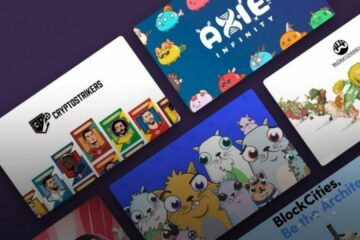NFTs are digital assets of all types, shapes and forms. Cryptokitties is the most famous example of an NFT, but newer ones are offering different ways to own these tokens that include blockchain-verified ownership on some cases or using decentralized storage to ensure they are not lost.
There are three main stakeholders in the process for issuing NFTs:
The publisher – The person responsible for launching this tokenized asset on the Ethereum network The holder – Anyone who buys these tokens A secondary market provider – Someone who has built a platform where you can buy or sell these tokens (e.g., OpenSea)
Selling fees will be paid by either party when selling their NFTs through a secondary market provider. In many situations, this fee can be steep and will cut into the token holder’s return on investment.
What are NFTs and how do they work?
NFTs are tokens that can be owned by individuals or groups. They are tokenized digital assets, cryptographically secured on the Ethereum blockchain. There are many different types of NFTs, but there is no standard type.
For example, Cryptokitties is a game centered around breedable and siring cats with Ether-based ERC-721 tokens. Each individual cat cannot be duplicated, making it completely unique to everyone else in the world who owns one as well.
The ERC-721 protocol was developed for non fungible tokens to represent ownership of something specific with cryptographic security .
When someone owns an NFT, they have full control over how choose to use it – including sending it to other people – and they cannot be replicated, duplicated or diluted.
Who are the stakeholders?
There are three main stakeholders in the process of issuing NFTs: The publisher- The person responsible for launching this tokenized asset on the Ethereum network The holder- Anyone who buys these tokens A secondary market provider – Someone who has built a platform where you can buy or sell these tokens (e.g., OpenSea)
Selling fees will be paid by either party when selling their NFTs through a secondary market provider. In many situations, this fee can be steep and will cut into the token holder’s return on investment.
When someone owns an NFT, they have full control over how choose to use it – including sending it to other people – and they cannot be replicated, duplicated or diluted.
What is the ERC-721 protocol?
The ERC-721 protocol was developed for non fungible tokens to represent ownership of something specific with cryptographic security .
When someone owns an NFT, they have full control over how choose to use it – including sending it to other people – and they cannot be replicated, duplicated or diluted.
How do fees work when selling NFTs on a secondary market provider?
Selling fees will be paid by either party when selling their NFTs through a secondary market provider. In many situations, this fee can be steep and will cut into the token holder’s return on investment. The stakeholders of an NFT are the publisher, the holder and a secondary market provider.
How are ERC-721 tokens different from other types of tokens?
There are many different types of NFTs, but there is no standard type. ERC-721 tokens are cryptographically unique ownership records on Ethereum. The main difference between these tokens and other digital assets is that they cannot be replicated or manipulated in any way – each one exists on its own with full control over how it can be used by its owner. However, since anyone can make their own tokenized asset using the same protocol, there has been some debate about what makes a token truly valuable . This doesn’t mean that all NFTs will not have value, just that there needs to be something unique about each token for it to be worth anything at all.
The three main stakeholders in the process for issuing these tokens
The three main stakeholders in the process for issuing these tokens are the publisher, the holder and a secondary market provider. Selling fees will be paid by either party when selling their NFTs through a secondary market provider. In many situations, this fee can be steep and will cut into the token holder’s return on investment. The publishers of a NFT are solely responsible for launching its tokenized asset on the Ethereum network.
Description of the process
NFTs are created on the Ethereum network through a coding system called ERC721 and it is for this reason why tokens like these can only be found on the Ethereum blockchain (although, other blockchains such as NEO have expressed interest in creating similar systems). The tokenized asset that has been finalised by NFT smart contracts can then be sold to interested parties who will hold its value over time just as they would any other tradable asset such as gold or money. Publishers may choose to ‘mint’ more tokens than there were ETH sent to the contract address when initially launching an NFT and this behaviour is built into ERC721 so that publishers can take advantage of increased demand and earn additional fees. Different NFTs can hold different levels of risk for holders, but the ERC721 smart contract has safeguards in place which protect both parties involved should things go wrong. The contracts contain fail-safe mechanisms that act to align the interests of publishers and token holders so the system runs smoothly.
What makes NFTs valuable?
NFTs are valuable because they allow their owner to acquire a completely unique digital asset on the blockchain which cannot be replicated or copied by other users who possess them after purchase is completed through an Ethereum network transaction. If you own an NFT, it is yours and only yours, unlike shares in traditional companies where others may own exactly what you own at any given time throughout history.
How do NFTs fit into the value exchange paradigm?
The rise of NFTs and their proliferation within the blockchain world is a natural result of users wanting to own an asset which cannot be replicated or reproduced by anyone else, nor can it be taken away from them as they would traditional assets such as money or gold. These early-stage digital assets are just beginning to be used in the sale and purchase of other items on secondary markets and exchanges, meaning that these tokens will continue to grow in popularity as time goes on.



0 Comments